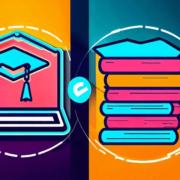WGU D025 NURS 5202 AWM2 Task 1 Advocating for Policy Change to Improve Health Outcomes in the Community Example
 NURS 5202 AWM2 Task 1: Advocating for Policy Change to Improve Health Outcomes in the Community Assignment
NURS 5202 AWM2 Task 1: Advocating for Policy Change to Improve Health Outcomes in the Community Assignment
NURS 5202 AWM2 Task 1: Advocating for Policy Change to Improve Health Outcomes in the Community Assignment Brief
Assignment Instructions Overview
This assignment focuses on the role of the advanced professional nurse in advocating for policy changes that improve health outcomes in the community. Students will analyze data, identify at-risk populations, and develop a policy proposal addressing social determinants of health (SDOH). Additionally, they will demonstrate interprofessional collaboration, ethical considerations, and policymaker engagement through an (I) SBAR summary.
For top-quality coursework writing help and assignment writing services, trust Nursing Custom Writing. Our expert team delivers 100% original human-written work tailored to your needs. Contact us via phone, WhatsApp, or live chat for assistance today and get the most reliable research paper help!
Understanding Assignment Objectives
The primary objective of this assignment is to prepare students to lead advocacy efforts as advanced professional nurses. Key components include:
- Distinguishing Advocacy Roles: Comparing advocacy in a clinical setting versus a community health setting.
- Interprofessional Collaboration: Employing evidence-based strategies to collaborate within an Advocacy Action Team (AAT).
- Data Analysis: Identifying a pressing health issue affecting an at-risk population and evaluating existing policies.
- Policy Development: Proposing a policy change and addressing its ethical, social, and implementation challenges.
- Professional Communication: Articulating findings in a structured and persuasive manner.
The Student’s Role
Students will take on the role of an advanced professional nurse advocating for health policy change. They are expected to:
- Gather and Analyze Data: Use reliable sources to validate a health issue and assess its impact on an at-risk population.
- Develop a Policy Proposal: Address gaps in current policies and propose a solution that aligns with ethical standards and equitable healthcare distribution.
- Engage Policymakers: Identify key stakeholders and propose strategies to advance the policy initiative.
- Collaborate with Interprofessional Teams: Utilize evidence-based approaches to foster teamwork and ensure a comprehensive policy framework.
Check out another task that our nursing essay writing services have assisted another student on D026 NURS 5203 Achieving Quality Outcomes Through Value-Based Nursing Care Paper Example.
Competencies Measured
This assignment assesses students on the following competencies:
- Practicing as an Advanced Nursing Professional – Developing lifelong learning strategies essential for nursing practice.
- Recommending Regulatory Policies – Advocating for legal and regulatory changes that enhance patient and community health outcomes.
- Impact of Interprofessional Team Roles – Evaluating team dynamics and their effects on healthcare delivery.
- Analyzing Data for Quality Improvement – Using healthcare data to guide evidence-based policy recommendations and improve health outcomes.
WGU D025 NURS 5202 AWM2 Task 1 Advocating for Policy Change to Improve Health Outcomes in the Community Example
Advocating for Policy Change to Improve Health Outcomes in the Community
- Introduction
Professional nurses play a pivotal role in shaping healthcare policies that enhance patient care and community health outcomes. As advanced professional nurses, their advocacy extends beyond individual patient interactions to influencing systemic changes that address broader public health concerns. This paper examines how advanced professional nurses advocate for at-risk populations, proposes an evidence-based policy change to improve health outcomes, and outlines strategies for effective policy advocacy.
- Advocacy in Community vs. Clinical Practice Settings
Advanced professional nurses advocate differently in community settings compared to clinical practice.
- Community Setting
Nurses in community settings focus on public health advocacy, addressing health disparities affecting at-risk populations.
They collaborate with policymakers, community organizations, and stakeholders to develop health programs and policies that enhance access to care.
Nurses use epidemiological data to identify risk factors, develop prevention strategies, and advocate for funding and legislative support to implement community-wide health initiatives (Chiu et al., 2021).
- Clinical Practice Setting
Advocacy at the clinical level involves ensuring individual patients receive equitable care, access to treatments, and necessary resources.
Nurses advocate for patient rights, ethical care, and personalized interventions tailored to patient needs.
They act as liaisons between patients and healthcare providers, ensuring informed decision-making and adherence to best medical practices (Flaubert et al., 2021).
III. Interprofessional Collaboration Strategies
To promote interprofessional collaboration within an Advocacy Action Team (AAT), advanced professional nurses can utilize the following strategies:
Regular Interdisciplinary Meetings: These facilitate communication among diverse healthcare professionals, fostering a collaborative approach to policy development (Martin et al., 2021).
Utilization of Collaborative Technology: Shared digital platforms and electronic health records (EHR) enhance real-time data sharing, coordination, and seamless integration of care across disciplines.
- Data Analysis of an At-Risk Population’s Health Issue
HIV among men who have sex with men (MSM) is a significant public health challenge in Miami-Dade County, Florida.
The county reports an HIV incidence rate of 28.4 per 100,000, surpassing the state average.
MSM account for 59% of new HIV cases due to high-risk behaviors influenced by socioeconomic and psychological factors (Gonzales-Zamora et al., 2022).
Key contributors include substance abuse, limited access to healthcare, and societal stigma.
- Characteristics of the At-Risk Population
Substance Use and Risky Behavior: Many MSM engage in drug and alcohol use, which correlates with unsafe sexual practices and increased HIV transmission.
Social Stigma and Family Rejection: Many MSM experience familial estrangement, leading to decreased support networks and engagement in risky behaviors due to emotional distress.
- Social Determinant of Health (SDOH) Analysis
Poverty is a primary SDOH predisposing MSM to HIV in Miami-Dade County:
Economic instability limits access to preventative services such as Pre-Exposure Prophylaxis (PrEP) and regular HIV testing.
Many low-income MSM lack health insurance, preventing consistent medical consultations.
Financial hardship contributes to housing instability, increasing susceptibility to high-risk behaviors (Gonzales-Zamora et al., 2022).
VII. Insufficiency of Current Policy
The Florida Medicaid program and existing state initiatives inadequately address poverty-related barriers to HIV prevention and care:
Medicaid covers some HIV treatment but does not provide comprehensive support for preventive measures like PrEP coverage, housing assistance, and mental health services.
Current policies do not address broader social determinants that perpetuate health disparities.
A lack of funding for targeted outreach programs limits awareness and engagement within at-risk populations.
VIII. Policy Proposal
A Comprehensive Income-Based HIV Prevention and Care Program is proposed to address these gaps:
Policy Components:
Expansion of Medicaid coverage to include PrEP and preventive healthcare.
Increased funding for community health programs focusing on culturally competent education.
Establishment of affordable housing initiatives for MSM at risk of homelessness.
Health Impact:
Higher PrEP uptake rates and reduced HIV incidence.
Improved health equity and access to services among low-income MSM.
Equity Considerations:
Culturally appropriate resources for Spanish-speaking and other minority groups.
Tailored outreach programs to increase awareness and accessibility.
Ethical Considerations:
Aligns with ANA Code of Ethics provisions on justice and equitable care.
Promotes advocacy for vulnerable populations.
Barriers to Implementation:
Financial constraints in securing funding.
Legislative resistance from policymakers hesitant to increase social program budgets.
- Policymaker Identification and Rationale
Dr. Carina Black, Director of the Florida Department of Health
Influence in public health initiatives, resource allocation, and policymaking.
Experience in healthcare disparities makes her well-suited to champion HIV prevention policies.
- Strategies to Strengthen Professional Practice as a Policy Advocate
Continuing Education on Health Policy: Staying updated on legislative changes and best advocacy practices through research and conferences.
Professional Networking: Engaging with professional organizations to amplify advocacy efforts and leverage resources.
- (I) SBAR Summary
I – Identify:
HIV incidence among MSM in Miami-Dade County is disproportionately high due to socioeconomic factors.
S – Summary:
Current policies inadequately address social determinants contributing to HIV prevalence. Expanding Medicaid, increasing funding for community outreach, and establishing affordable housing programs are proposed solutions.
B – Background:
The county reports an HIV incidence of 28.4 per 100,000, with MSM disproportionately affected. Socioeconomic barriers limit access to preventive care.
A – Assessment:
A comprehensive program addressing financial, educational, and housing challenges is required to reduce HIV transmission and improve health outcomes.
R – Recommendation:
Policy adoption, increased funding, and collaboration with healthcare stakeholders are necessary to address this urgent public health issue.
XII. Conclusion
Advocacy by advanced professional nurses is essential in influencing health policy changes that address community health disparities. By leveraging data-driven insights, interprofessional collaboration, and policy engagement, nurses can lead transformative efforts to improve healthcare outcomes for at-risk populations.
References
Chiu, P., Cummings, G. G., Thorne, S., & Makaroff, K. S. (2021). Policy advocacy and nursing organizations: A scoping review. Policy, Politics, & Nursing Practice, 22(4), 276–296.
Flaubert, J. L., Menestrel, S. L., Williams, D. R., & Wakefield, M. K. (2021). The role of nurses in improving health equity. National Academies Press (US).
Gonzales-Zamora, J. A., Ponce-Rosas, L., & Martinez, R. (2022). Determinants of public health and interventions to address HIV infection among MSM in Miami-Dade County, Florida, USA. Infezioni in Medicina, 30(3).
Martin, P., Pighills, A., Burge, V., Argus, G., & Sinclair, L. (2021). Promoting interprofessional education and collaborative practice in rural health settings. International Journal of Environmental Research and Public Health, 18(10), 5162.
Detailed Assessment Instructions for the WGU D025 NURS 5202 AWM2 Task 1 Advocating for Policy Change to Improve Health Outcomes in the Community Assignment
Heat maps
AWM2 — AWM2 TASK 1: ADVOCATING FOR POLICY CHANGE TO IMPROVE HEALTH OUTCOMES IN THE COMMUNITY
ESSENTIALS OF ADVANCED NURSING ROLES & INTERPROFESSIONAL PRACTICE — D025 PRFA — AWM2
PREPARATION TASK OVERVIEW SUBMISSIONS EVALUATION REPORT
COMPETENCIES
7063.1.1 : Practicing as an Advanced Nursing Professional
The learner recommends strategies for practicing lifelong learning skills to encourage the continuous improvement essential for practicing as an advanced nursing professional.
7063.1.2 : Recommend Regulatory Policies
The learner recommends legal and regulatory policies that advocate for improved health outcomes in patients and populations.
7063.1.3 : Impact of Interprofessional Team Roles
The learner analyzes the roles and interaction of interprofessional team members to assess the resulting impact on healthcare outcomes.
7063.1.4 : Analyze Data for Quality Improvement
The learner analyzes organizational performance data to guide recommendations for improving healthcare outcomes and disseminating results to a professional community.
INTRODUCTION
Professional nurses have the potential to influence health policy by using a collective voice for patient and healthcare advocacy. In this assessment, you will demonstrate competence as an advanced professional nurse leading an interprofessional advocacy action team (AAT) to advocate for population health policy change.
You will explore the role of the advanced professional nurse advocating for a policy proposal related to a current health issue for an at-risk population in your community. You will gather and analyze data to identify patients and populations at risk, recommend policy change to improve health outcomes in the community, and identify key stakeholders to serve on the AAT. You will also demonstrate the ability to identify and communicate effectively with essential policymakers to move the policy forward. Finally, you will create a summary of the policy proposal in (I)SBAR format (i.e., identify, summary, background, assessment, recommendation).
Before starting this task, you must have completed CAM2 Task 1 and the “CPE Record” associated with task.
REQUIREMENTS
Your submission must be your original work. No more than a combined total of 30% of the submission and no more than a 10% match to any one individual source can be directly quoted or closely paraphrased from sources, even if cited correctly. An originality report is provided when you submit your task that can be used as a guide.
You must use the rubric to direct the creation of your submission because it provides detailed criteria that will be used to evaluate your work. Each requirement below may be evaluated by more than one rubric aspect. The rubric aspect titles may contain hyperlinks to relevant portions of the course.
Tasks may not be submitted as cloud links, such as links to Google Docs, Google Slides, OneDrive, etc., unless specified in the task requirements. All other submissions must be file types that are uploaded and submitted as attachments (e.g., .docx, .pdf, .ppt).
- Discuss two differences in how an advanced professional nurse advocates for an at-risk population in the community versus how an advanced professional nurse advocates for an individual patient in the clinical practice setting. Include scholarly source(s) as part of your response. Community Setting:
- Clinical Practice Setting:
- Describe how the advanced professional nurse will apply two evidence-based strategies to promote interprofessional collaboration within an Advocacy Action Team (AAT). Include one scholarly source to support your description. https://www.ncbi.nlm.nih.gov/books/NBK195418/ consider the healthy people 2030 initiatives and healthcare indicators · Rural Health Information Hub
- Analyze data that validates a health issue affecting an at-risk population in the county or state where you live or work. Include relevant source(s) as part of your response. · Ideas: · HIV? · MSM? · High risk pregnancies?
- Describe two characteristics of the at-risk population identified in part C.
- Analyze how a specific social determinant of health (SDOH) in the county or state is predisposing the at- risk population from part C to the health issue identified in part C.
- Analyze how current policy is insufficient to address the SDOH identified in part E.
Note: Current policy may be a county ordinance, county or state regulation, state law, program, school curriculum, health initiative, etc.
- Provide a policy proposal to address the SDOH identified in part E. Include scholarly source(s) to support your policy proposal as part of your response.
- Describe how the policy proposal could impact the health issue from part C.
- Discuss how the policy proposal will address diversity in the population to ensure equitable distribution of resources.
- Describe how the policy proposal upholds two provisions from the ANA Code of Ethics. Include
relevant source(s) as part of your response.
- Describe two actual or potential barriers in your county or state that impede the implementation of the policy proposal.
- Provide the name and title of one policymaker with authority to move the policy proposal forward.
- Provide the rationale for choosing the policymaker identified in part H.
- Describe two strategies you will use as an advanced professional nurse to strengthen your professional practice as a policy advocate.
- Create an (I)SBAR summary of the policy proposal using the attached “(I)SBAR Summary Template. Save and submit your (I)SBAR summary as a separate .pdf or .docx document.
Note: Refer to the article titled “Using SBAR to Communicate with Policymakers” found in Unit 3 of the Course of Study.
- Acknowledge sources, using in-text citations and references, for content that is quoted, paraphrased, or summarized.
- Demonstrate professional communication in the content and presentation of your submission.
File Restrictions
File name may contain only letters, numbers, spaces, and these symbols: ! – _ . * ‘ ( ) File size limit: 200 MB
File types allowed: doc, docx, rtf, xls, xlsx, ppt, pptx, odt, pdf, csv, txt, qt, mov, mpg, avi, mp3, wav, mp4, wma, flv, asf, mpeg, wmv, m4v, svg, tif, tiff, jpeg, jpg, gif, png, zip, rar, tar, 7z
RUBRIC
A:ADVANCED PROFESSIONAL NURSE AS ADVOCATE
B:INTERPROFESSIONAL COLLABORATION
C:DATA DRIVEN HEALTH ISSUE
D:CHARACTERISTICS OF AT-RISK POPULATION
E:SOCIAL DETERMINANT OF HEALTH (SDOH)
F:CURRENT POLICY
G:POLICY PROPOSAL
G1:HEALTH ISSUE IMPACT
G2:EQUITABLE DISTRIBUTION OF RESOURCES
G3:ETHICAL PROVISIONS
G4:BARRIERS
H:POLICY MAKER
H1:RATIONALE
I:STRATEGIC NEXT STEPS
J:POLICY SUMMARY
K:SOURCES
L:PROFESSIONAL COMMUNICATION
WEB LINKS
Guide for the Policy Proposal – Pathway to Advocate for Change
SUPPORTING DOCUMENTS
(I)SBAR Summary Template.docx AWM2 Template.docx
Boost Your Grades with Our Expert Nursing Paper Writing Services!
Are you grappling with challenging nursing topics? Look no further! nursingcustomwriting.com is your trusted partner for top-notch nursing writing services. Our dedicated team of skilled nursing essay writers is committed to crafting customized and original nursing papers, ensuring academic success.
Making Nursing Assignments a Breeze
Whether you’re tackling complex topics, facing tight deadlines, or dealing with specific instructions, we’ve got you covered. From creating custom nursing research papers to assisting with nursing assignments, our professionals are here to support you.
How We Can Help
Our pro nursing writers excel at crafting outstanding nursing essay papers from scratch, addressing any topic, meeting any deadline, and following your specific instructions. At nursingcustomwriting.com, we recognize the significance of your academic success.
Why Choose Us?
- Affordable Prices: Our online nursing papers are affordably priced, making them accessible to all college students.
- Expert Writers: Let our skilled writers perfect your paper, providing the expertise needed for exceptional results.
- Originality Guaranteed: Bid farewell to plagiarized papers. Our nursing experts create original and customized nursing essays for your academic success.
- Easy Ordering Process: Ready to place your order? It’s hassle-free! Visit our “Place Order” page, provide paper details, proceed to checkout, and your order will be assigned to a suitable expert.
Why Trust Our Professionals?
Our experts at nursingcustomwriting.com stay updated with the latest nursing trends, ensuring your nursing research paper stands out. Trust us for the best nursing writing services that meet your desires and ensure timely submissions.
Save Time and Secure Top Grades
Ready to save time and secure the grades you deserve? Visit our “Place Order” page, fill in your paper details, proceed to checkout, and trust us to make your nursing papers perfect. Don’t wait until the last minute; fill in your requirements and let our experts deliver your work ASAP.


 D025 NURS 5202 Clinical Practice Experience on Essentials Assignment
D025 NURS 5202 Clinical Practice Experience on Essentials Assignment D024 NURS 5201 Professional Presence and Influence
D024 NURS 5201 Professional Presence and Influence C922 NURS 6005 Emerging Trends and Challenges in 21st Century Nursing Education
C922 NURS 6005 Emerging Trends and Challenges in 21st Century Nursing Education D219 NURS 3610 Scholarship in Nursing Practice
D219 NURS 3610 Scholarship in Nursing Practice Assignment Instructions Overview
Assignment Instructions Overview Thinking is the essence of who we are—our minds are perpetually in motion, exploring and deciphering the world around us. As a college student, you possess an incredible capacity for thought, and your academic voyage serves as the catalyst to harness and expand this extraordinary ability. In the realm of higher education, one skill stands above the rest in its universal significance: critical thinking. Far from being confined to a single subject or discipline, critical thinking is a versatile mental prowess that holds the key to success in every facet of your educational, professional, and personal endeavors.
Thinking is the essence of who we are—our minds are perpetually in motion, exploring and deciphering the world around us. As a college student, you possess an incredible capacity for thought, and your academic voyage serves as the catalyst to harness and expand this extraordinary ability. In the realm of higher education, one skill stands above the rest in its universal significance: critical thinking. Far from being confined to a single subject or discipline, critical thinking is a versatile mental prowess that holds the key to success in every facet of your educational, professional, and personal endeavors. Discover the secrets to unlocking your brain’s incredible capacity for effective studying and conquer the daunting task of memorizing vast amounts of information. Whether you’re faced with the challenge of acing multiple college courses or simply want to enhance your memory skills, fear not, for memorization is not an elusive talent reserved for a select few. It is a skill that can be cultivated and honed by anyone willing to embark on a journey of training and self-discovery.
Discover the secrets to unlocking your brain’s incredible capacity for effective studying and conquer the daunting task of memorizing vast amounts of information. Whether you’re faced with the challenge of acing multiple college courses or simply want to enhance your memory skills, fear not, for memorization is not an elusive talent reserved for a select few. It is a skill that can be cultivated and honed by anyone willing to embark on a journey of training and self-discovery. In the pursuit of academic excellence and personal growth, the art of effective studying emerges as a guiding light for students. It unlocks the door to success, instilling confidence, competence, and a profound sense of achievement. Beyond mere grades and accolades, good study skills alleviate the weight of anxiety tied to tests and deadlines, granting students the freedom to explore other dimensions of their lives. They are the keys that unlock a world of knowledge and empower individuals to navigate the academic landscape with finesse and purpose.
In the pursuit of academic excellence and personal growth, the art of effective studying emerges as a guiding light for students. It unlocks the door to success, instilling confidence, competence, and a profound sense of achievement. Beyond mere grades and accolades, good study skills alleviate the weight of anxiety tied to tests and deadlines, granting students the freedom to explore other dimensions of their lives. They are the keys that unlock a world of knowledge and empower individuals to navigate the academic landscape with finesse and purpose. As a student, you’ve likely encountered situations where the terms “coursework” and “assignment” are used interchangeably. However, it’s crucial to grasp the distinct meanings of these terms. Understanding the differences between them is essential for every student. Essentially, both coursework and assignments involve tasks or projects that you need to complete for your academic studies. Coursework is a broader term that encompasses various academic activities, while assignments are specific tasks or pieces of work assigned to you as part of your coursework. Assignments are usually more focused and precise, designed to assess your understanding of a particular concept or skill. They are typically graded and contribute to your overall course grade. Both coursework and assignments play significant roles as vital components of your academic workload that must be completed during your studies.
As a student, you’ve likely encountered situations where the terms “coursework” and “assignment” are used interchangeably. However, it’s crucial to grasp the distinct meanings of these terms. Understanding the differences between them is essential for every student. Essentially, both coursework and assignments involve tasks or projects that you need to complete for your academic studies. Coursework is a broader term that encompasses various academic activities, while assignments are specific tasks or pieces of work assigned to you as part of your coursework. Assignments are usually more focused and precise, designed to assess your understanding of a particular concept or skill. They are typically graded and contribute to your overall course grade. Both coursework and assignments play significant roles as vital components of your academic workload that must be completed during your studies.